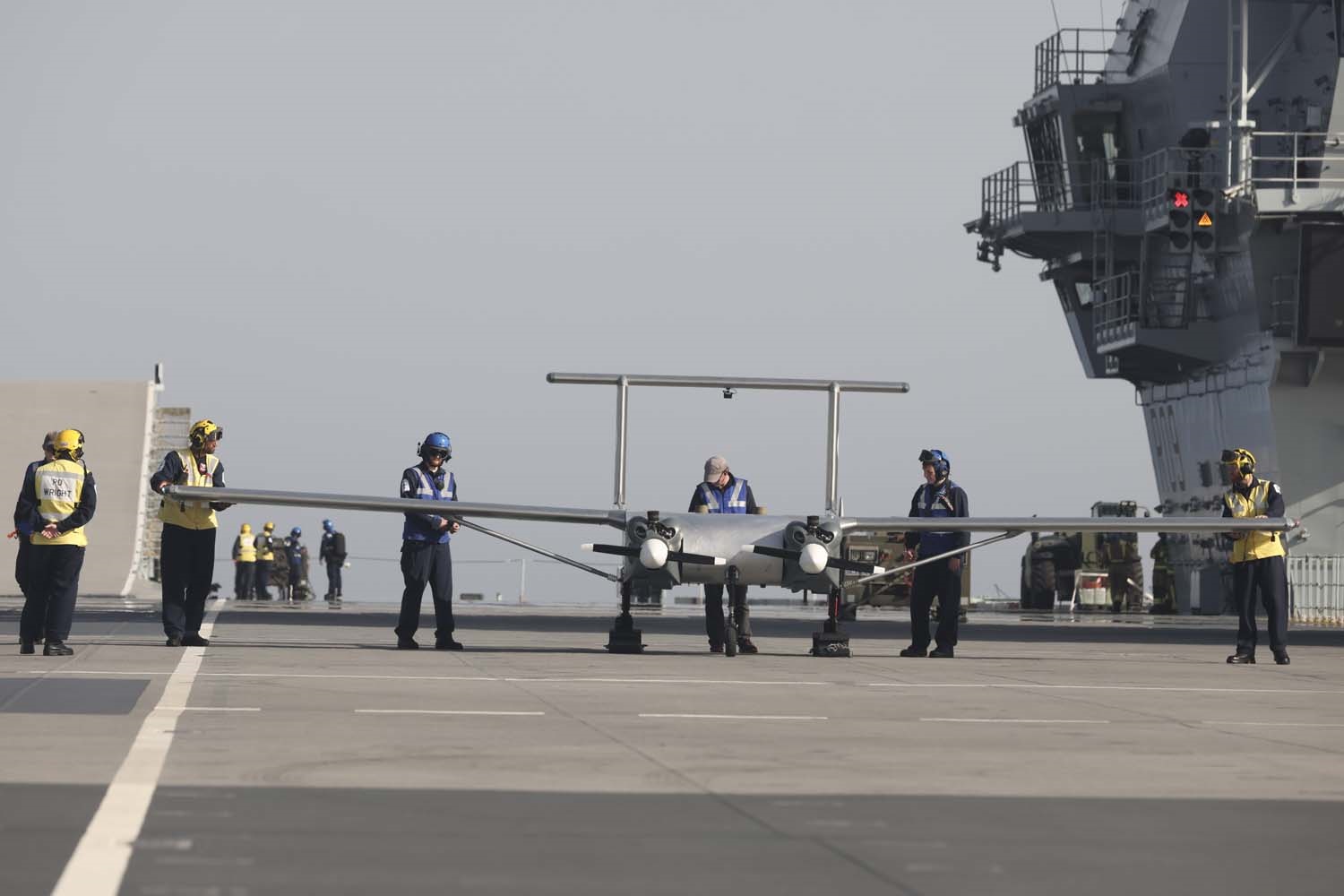A pilotless plane has flown on and off a Royal Navy aircraft carrier for the first time. The W Autonomous Systems (WAS) drone flew from the Lizard Peninsula and on to the deck of HMS Prince of Wales off the Cornish coast, delivered supplies, then flew back in a milestone flight which points the way to the future of naval aviation. It’s a vital step along the way to operating crewless aircraft safely alongside F-35 Lightning jets and naval Merlin and Wildcat helicopters which are currently the backbone of the Fleet Air Arm. The goal is to deploy drones with a UK Carrier Strike Group in the future, using them to transfer stores and supplies – such as mail or spare parts – between ships, without the need to launch helicopters.
Captain Richard Hewitt, Commanding Officer HMS Prince of Wales said: “HMS Prince of Wales is a fifth-generation aircraft carrier and operating autonomous drones like this will become the norm across future Royal Navy Carrier Strike Groups in our 50-year lifespan.”
Lieutenant Ash Loftus, leading the trials for the Royal Navy on board HMS Prince of Wales added:“Today’s demonstration is the culmination of 18 months of hard work from dozens of people across the Royal Navy and W Autonomous Systems. Carrier aviation is amongst the most difficult aspects of naval warfare and this success is testament to their efforts.”
Stephen Wright, executive chairman and founder of W Autonomous Systems, said: “This landing demonstrates the agility of our autonomous drone. We are hugely proud to deliver this ground-breaking trial for the Royal Navy and showcase the future of aviation.”

Drones are cheaper to operate, eliminate any potential risk to aircrew – such as in bad weather – and keep the hi-tech Merlins and Wildcats free for operational sorties, such as hunting hostile submarines or surface vessels which are threats to the carrier strike group. HMS Prince of Wales has experimented with drone technology before – notably small quadcopters and Banshee targets (small jets which are launched by catapult and parachutes down to land when the mission is complete). But the trials off the Lizard are in a different league, involving a much larger (ten-metre wingspan), more capable pilotless aircraft. The Royal Navy joined forces with Southampton-based W Autonomous Systems, a leading-edge British firm which is developing long-range, heavy-lift autonomous drones for defence.
The drones incorporate a ground-breaking autopilot system, eliminating the need to be controlled remotely by trained pilots, and are designed to operate in the most challenging environments. Its HCMC twin-engine light alloy twin boom aircraft is capable of carrying a payload of 100kg up to 1,000 kilometres (620 miles). Crucially it can land on uneven ground and needs a runway just 150 metres long – a little over half the length of the flight decks on the UK’s Queen Elizabeth-class aircraft carriers – to land or take off. After extensive preparations ashore by the combined RN and WAS trials team, and attaining endorsements and authorisations from the Civil Aviation Authority, the HCMC drone took off from Predannack, the satellite airfield of RNAS Culdrose, and after a flight of about 20 minutes, touched down safely on the HMS Prince of Wales’ deck. Once its symbolic payload of naval memorabilia was removed by crew, the aircraft was turned around and it was re-launched back to Predannack. HMS Prince of Wales will be operating off the Eastern Seaboard of the USA until Christmas as she conducts experiments with F-35 Lightning stealth fighters, MV-Osprey tilt-rotors, and the Mojave drone.
















